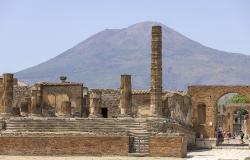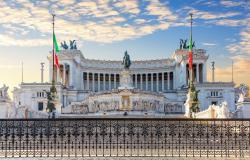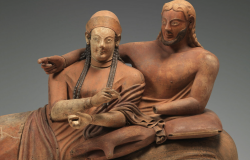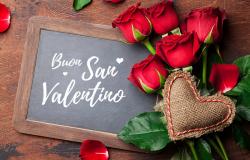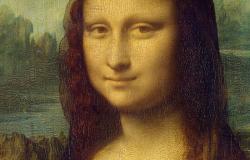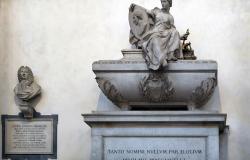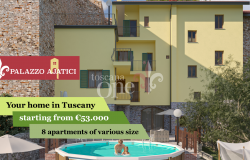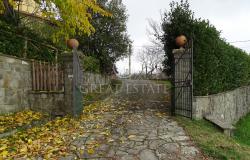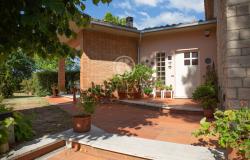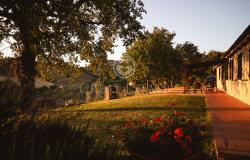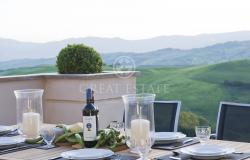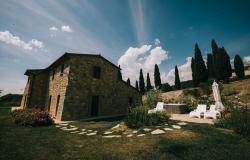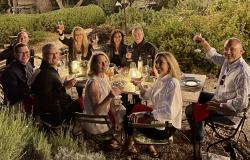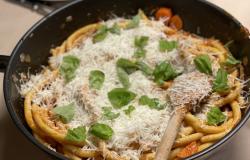On the 15th of April 1452 in the hills of Tuscany, Italy, a peasant girl named Caterina gave birth to an illegitimate son in a small town called Vinci. The father was a wealthy legal notary by the name of Piero Fruosino, and as this was an out-of-wedlock child, he could not take the family name; instead, he would take the name of the town in which he was born, Vinci, and was named Leonardo.
Leonardo da Vinci would go on to change the thinking of his generation and, in turn, every generation to follow. He would redefine art, science, invention and engineering, and in doing so help pioneer the Italian high renaissance movement during the 15th century. His most famous painting, the Mona Lisa, attracts up to 15,000 visitors a day and is arguable the most famous painting in the world today.
Leonardo would spend his early childhood with his mother, Caterina in nearby Anchiano before returning to live with his father, Ser Piero, in Vinci in 1457, at the age of five. The town of Vinci is nestled amongst the Tuscan hills, and has a population of just over 14,000. It is located 11km north of Empoli and can be easily be reached by bus in about half an hour, or, for the more adventurous, a 3 hour walk through the Tuscany olive groves and vineyards.
If you have the time, and the stamina, then it is well worth the walk. From Empoli take the Via Leonardo da Vinci, and then onto the Via Pietramarina and head north and before long you will be on the quiet country roads that lead all the way to Vinci.
There are only two hotels located within the actual town: the Mona Lisa and the Hotel Alexander. So it’s best to book early as they can quickly become full, especially during high season.
The skyline of Vinci is dominated by its castle; built during the 12th century it soon earned the nicknamed of the “ship castle,” due to its similar shape. While looking up at its bell tower, high above, it’s impossible not to imagine that maybe a young Leonardo looked up at this very tower. Did his dreams of flight stem from here? Did his young, curious mind first envisage his flying machine after watching the birds fly from this very tower all those centuries ago?

The castle has now been turned into the Museo "Leonardino" - Museum of Leonardo. Spread over three floors the museum houses more than sixty models of Leonardo’s ideas and inventions: taken from his various notebooks, including the famous codex Atlanticus.
The beauty of this museum is that it doesn’t just dwell on Leonardo the artist. Instead, it covers many of his other interests such as his war machines, his underwater breathing apparatus and even tries to answer the question; is it possible that Leonardo invented the bicycle more than 300 years before Baron Karl von Drais would claim the idea in 1817? The entrance to the museum is 6 euros which also includes a climb to the top of the bell tower.
On leaving the museum a good stop is the tourist information office: just opposite. They can supply you with opening times, bus time-tables and have excellent hiking maps of the nearby area. Echoes of Leonardo can still be heard throughout Vinci, and taking a stroll around the deserted street as night, with the cool breeze floating down from the Tuscan hillside, and you can almost expect to pass a young Leonardo, returning home from a day spent exploring in the surrounding hills, known as the Montalbano. There are several restaurants in the town centre; all serving authentic Tuscan dishes at reasonable prices, and most are open seven days a week.

Just a half an hours walk from the town, hidden amongst the Tuscan countryside is the Casa Di Leonardo: the house that Leonardo da Vinci was, supposedly, born in. It is widely believed because Leonardo was an illegitimate son that his father would not allow him to be born in his house, and so sent Caterina to give birth in his second property just outside of Vinci.
The house is currently closed to the public until summer 2012, but is still well worth a walk, as from its hilly located you get a great panoramic view of Vinci and the surrounding area.
Tuscany is, of course, famous for its Chianti red wine and many of the local wineries offer free tasting sessions and tours. Just make sure you pick up a bottle of Da Vinci Chianti; a medium red with jammy flavours of ripe plums, and a perfect complement to pastas and meat dishes. The grapes are harvested on the south facing slopes immediately behind Vinci.
The town of Vinci is the perfect stop-off on the way either to, or from Florence. It has an old world charm that shines through on its own merit without having to name check Leonardo at every opportunity.
A night spent outside one of Vinci’s family run restaurants, with a bottle of Chianti and the light Tuscan breeze on your face can rival that of any Mediterranean destination. An air of tranquillity floats through the town and the relaxed atmosphere gives the impression of a local community that is happy to be itself, happy to live on its own terms, and refuses to be dragged into the 21 century rat-race. And is all the better for it.
During his lifetime, Leonardo da Vinci would work for Princes, Dukes and Kings, and with a mind that never stopped researching and questioning the world around him, he would leave behind, after his death, hundreds of codex pages filled with ideas ranging from the parachute to the tank, and even plans for an underwater army; tantalizing glimpses into the mind of a genius who was thinking, literally, hundreds of years ahead of his time.
The renaissance Silversmith Benevenuto Cellini once said “there had never been another man born in the world who knew as much as Leonardo”: you can’t argue with that.

